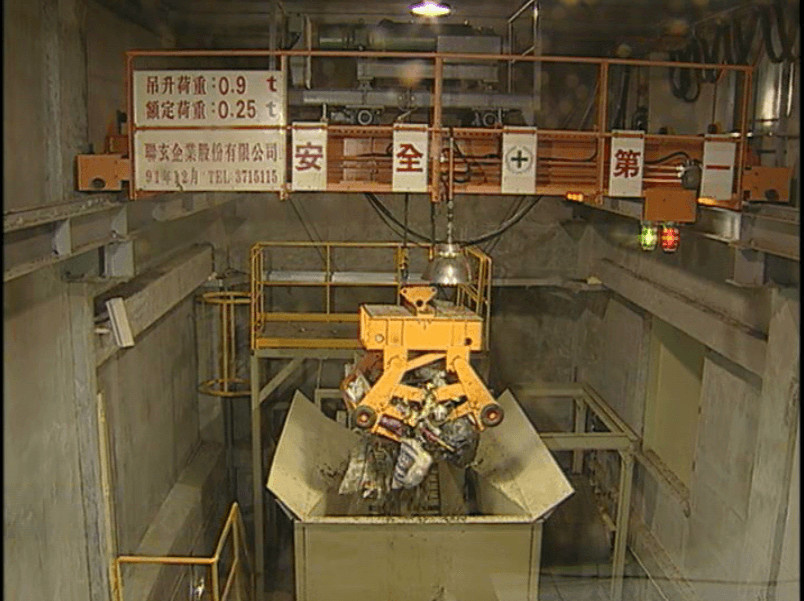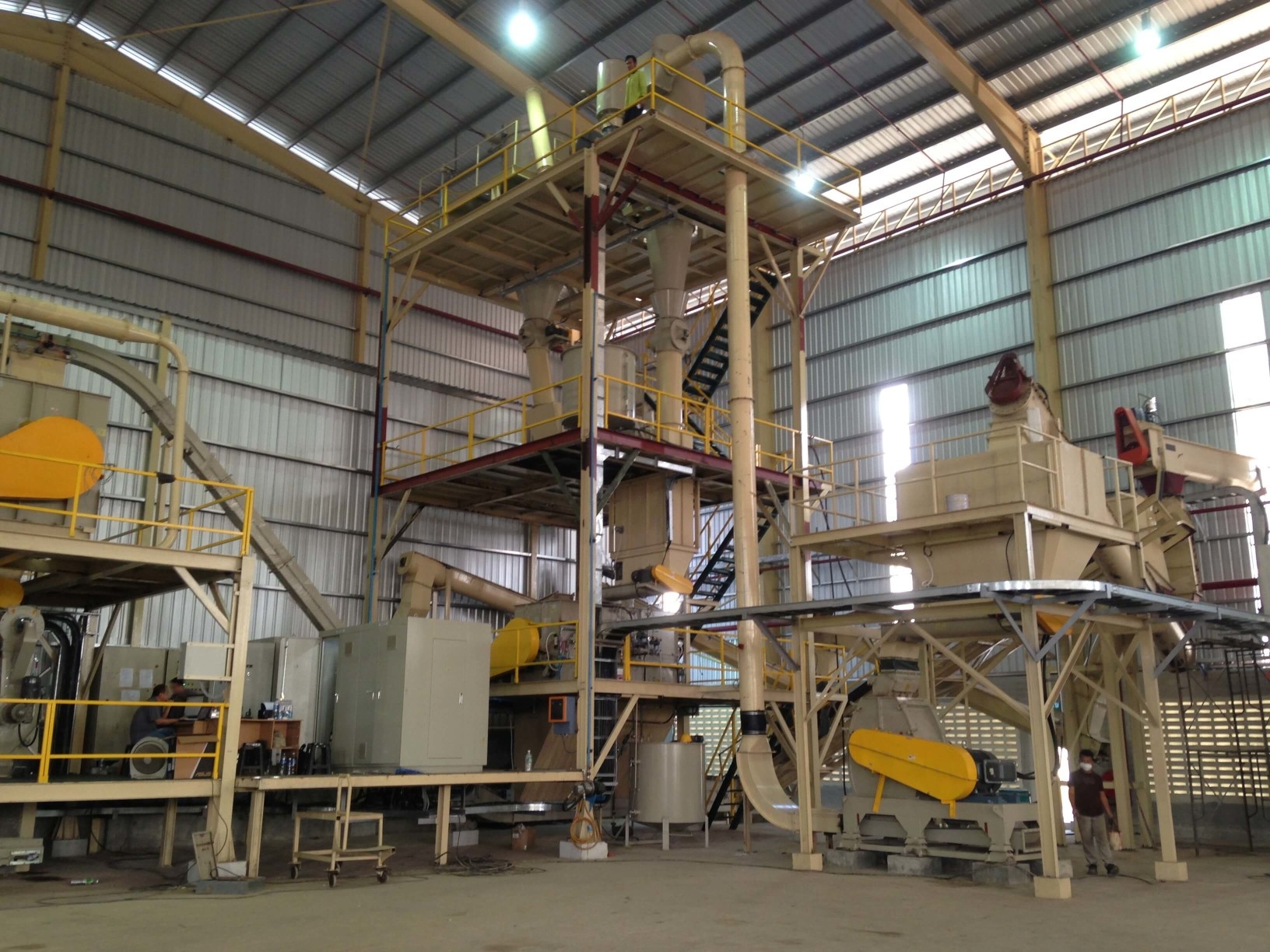Biofuel pellets or Refuse Derived Fuel (RDF-5) made from biomass waste
is becoming common as one of the renewable energy sources.
IDAH
provides core pieces of equipment and solutions in resource recovery
and production of biofuel pellets production.
Raw material for biomass pellet:
Agricultural waste: crop stalk and straw material, rice husk,
cotton stalk, coffee husk, alfalfa straw, coconut shell, palm shell,
sugarcane bagasse, etc.
Forestry residue: sawmill residue,
branches, bark, leaves, etc.
Solid waste: junk paper, waste
plastic, cardboard, etc.
A high-quality biomass pellet would
result in a higher calorific value with lower moisture and ash
contents.

Receiving Raw Material
The raw material comes in different shape. A sorting machine will be needed to separate inorganic material.
Magnet
The magnet is needed to separate magnetic metals, which can interfere with the grinding process.
Pre-grinding (crushing)
The pre-grinding is needed to lower the material size.
Drying
The material usually comes in high humidity, a drying process is needed to lower the moisture content
Airflow selection
This is the final classification to remove impurities.
Post-grinding
This step is the last grinding process before material enters pelleting system.
Pelleting
Pelleting starts with pre-conditioning, adding steam to further hydrate, and cook the material before entering the pelleting chamber to be formed into pellets.
Cooling
Cooling utilizes ambient air to cool down the hot pellet from the
pellet mill.
Thorough cooling is needed to prevent condensation inside the
packaging.
Packing
Packing gives protection to the pellets and also give easiness to handle and transport to customer's hand

Pelleting process description for biomass pellet
After the pelletizing process, the wood pellet is hot. Cooler lowers the temperature of the hot pellets to ±5 °C of room temperature and reduces the moisture by using ambient air. Cooling would extend the shelf life of the wood pellet.
All pellets will go through a vibration sieve to remove any irregular pellets or dust.
Weighing cell and bagging machines put pellets into bags with chosen quantity and seal the bags for storage. Finished products can also be loaded by trucks or in container bags.

Features and Benefits of IDAH Process Design and Equipment
IDAH firmly believes in a strategy of design fit for purpose. We recognize the constraints our customers face with rising ingredient costs, energy costs, and overheads costs, yet in the face of these challenges, it is still expected that high-quality products be supplied into a very competitive market. Our design philosophy is to work continuously to refine and improve processes and equipment to maximize the success of our customers. The following describes some of the features and benefits resulting from this philosophy.
We design our equipment for continuous operations and fulfill the expectation for minimal downtime. Our mission is to see our equipment still working years after installation, with only maintenance required being routine maintenance caused by normal fair wear and tear.
Two perspectives are influencing the formulation: culturing performances and efficiency of the machinery. For example, choose the right wood source is essential. Inappropriate wood sources will lower the steam incorporation level and causes jams at the pellet mills. Fat and moisture content play inseparable roles in the hammer mill and pulverizer throughput.
The independent drive on each shaft of the IDAH twin shaft lowers power consumption and noise. The paddles' reverse rotation allows completely emptying the chamber. The misting steam and water injectors further improve conditioner performance. The following conditioner system used steam jacketed (or heat jacketed) to create a homogenous mix with little to no free water. Insufficient pre-conditioning will cause cracks on the pellet surface and creating dust fines.
The counterflow cooler is used for cooling pellet and extrudate. Warm (hot) pellets get into the cooling chamber, the suction fan will transport out the air inside the chamber, and fresh ambient air will enter the chamber from the bottom, promoting pellet cooling action. When pellets are accumulated and touch the high-level limit sensor, a pneumatic discharge swivel valve will operate immediately to discharge the products. Counterflow air heat exchange ensures to achieve high cooling efficiency.

Specification of Pellet Mills (for Wood Pellets)
| Model | PM-42RB | PM-53RB | PM-635RB |
| Main Motor (HP) | 150 | 250 | 350 |
| Operation Capacity1 (t/h) | 0.4-0.6 | 1.3-1.5 | 1.8-2.0 |
Note:
1) Wood Pellets, pellet die hole size Ø 8.0 mm, moisture content < 12%, oil content <7%

